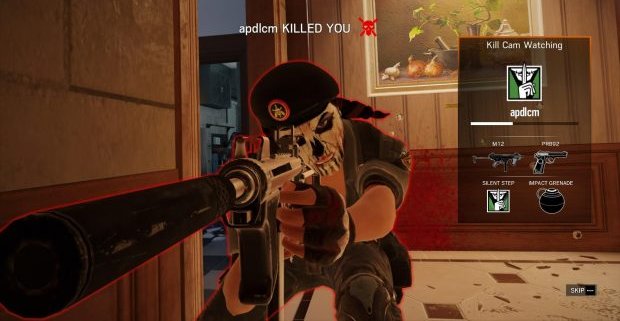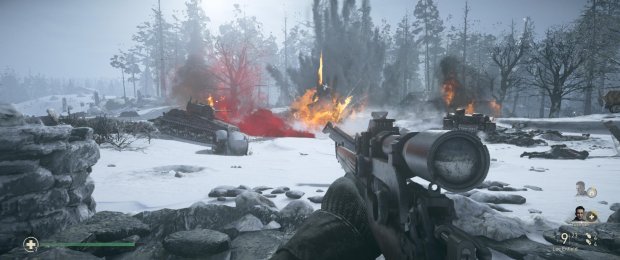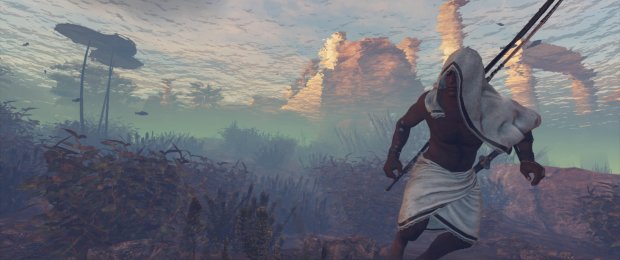It’s when you notice the little details in games that they really come alive. Those little things that hint at some sort of existence outside your control or awareness. They could be art props made to suggest who lived in the spaces you’re romping through, or little room layout details that show how the world works, but some of the touches that bring games to life the most come through animation.
This is a celebration of incidental animations that don't help you win or make you lose or do much of anything important. They just happen, and you probably don’t even notice them, or think about how much work they actually took. There’s a madness to incidental animation, that so much effort has been lavished into producing something so ancillary, something which many players might never come across. But it can make the difference between a game feeling right and feeling that little bit off. It’s about conjuring that suspension of disbelief. It’s where the magic is.
This selection of great incidental animation can’t hope to be exhaustive, since it’s simply compiled from the games I’ve played, and even within that paltry selection it’s only the things I’ve noticed, remembered and captured (with some pointers from some friends). But hopefully it’ll give you a new appreciation of the little things.
Assassin's Creed: Origins: Wet Bayek
Props to that special moment when a game nonchalantly plays out a very human response to something you’ve put your character through. Bayek doesn’t complain at you getting soggy, but his little hand and foot shakes give a sense of the person under all the stabbing.
Rise of the Tomb Raider: Wringing out the ponytail
Relatedly, Lara’s attention to her hair after coming out of water is a reminder of the tricky nature of dealing with long locks in extreme conditions. It’s just one of the many little animation details in Rise of the Tomb Raider, but several friends pointed towards it as their favourite and heck, they’re right.
Prey: Q-Beam wobble
Who was it at Arkane Studios who realised, "The Q-Beam absolutely has to comprise three objects which wobble as you move"? They are a genius. Weapons in games rarely passively react as you move around, and OK, that’s maybe because it’s a little distracting, but here in the Q-Beam, it’s wonderful.
Overwatch: Junkrat's grenade launcher
Another delightfully ramshackle weapon is Junkrat’s Frag Launcher. The way all its jiggling bits and pieces move as you walk do a great job of communicating Junkrat’s pegleg limp, and the way the flap on the end of the barrel flips as you fall really gets a sense of momentum across. You can almost imagine how his insane launcher actually works.
Titanfall 2: Alternator
Still on guns (because games are basically guns, right), I just love all the unnecessary (i.e. necessary) movement in Titanfall 2’s otherwise fairly straight Alternator submachine gun. Little bits flick back and forth as you fire, simply to express and celebrate its name. The Alternator was designed by Respawn animator Ranon Sarono, who’s a master of the gun animation form. His showreels and game gun jokes on his YouTube channel are recommended viewing.
Far Cry 2: jammed shotgun
Technically, Far Cry 2’s gun-jamming animations don’t fit our criteria for incidental animation because they directly affect the game, but they’re just so expressive. The sheer annoyance of the player character, as demoed here by Tigerfield, is just wonderful, and completely matches your own reaction to finding your gun suddenly refusing to work.
Far Cry 2: Hand
Far Cry 2’s filled with incidental animation. The way the player character’s hand interacts with the world around you set new standards.
But here’s the real incidental animation gold in Far Cry 2: the fingers change position to turn the watch’s bezel one way or the other. I’m sure Ubisoft Montreal could have designed it more efficiently, and I’m so pleased they didn’t.
Head over to page two for more wonderful incidental animations, including indie Quadrilateral Cowboy, Dishonored 2 and Wolfenstein II: The New Colossus.
Metal Gear Solid 5: iDroid
Look in the background, and you’ll see Snake’s thumb mirroring your control of the iDroid menu on a little side-mounted joystick. Utterly pointless.
Quadrilateral Cowboy: Bathroom
Blendo Games’ Brendan Chung is something of a connoisseur of incidental animation, so I asked him to pick out what he’s most proud of from his own games. He chose the bathroom in QuadCow’s Valencia Villa. "The bathroom is way too detailed and interactive considering it has no gameplay impact and is not part of the critical path," he says. Every cabinet opens, every component works. "The excess I'm most happy with is how both the shower and sink, after you turn their water off, continue drip-dropping for a few seconds before completely stopping. I am secretly hoping this becomes industry standard."
Who fancies starting a campaign?
Prey: Boiling curry
Or maybe it’s a stew. Either way, this combination of a lovely shiny shader effect and a very simple undulating mesh brings a pot eternally cooking in Talos-I’s kitchen to life, if you should ever notice it. Chances are, you won’t.
Dishonored 2: Audiograph
Even more Arkane, here’s Dishonored 2’s wonderfully characterful audiotape player. Watching the handle wind around and its punchcard jigger in and out makes having to stay nearby to hear the tape almost bearable.
Destiny 2: Sweeping bot
This bot, found in a dead end in the depths of Destiny 2’s social area (if you put the time into exploring it), is a callback to a sweeping robot which featured in the first Destiny’s Tower social space. We can all cherish its heartbreaking dedication to a thankless task—perhaps it’s a reference to all the effort that went into animating it?
Little Nightmares
If you take a moment to watch them from safety, you’ll see one of Little Nightmares’ awful chefs perform a little under-face scratch which is just fantastic.
Wolfenstein 2: The New Colossus: Reactor
Most incidental animation is small, but it doesn’t need to be. A way into his new adventure, B.J. Blazkowicz enters a vast hall that houses a reactor at its far end. The hall’s monumental machinations serve absolutely no function, the flying saucer-looking thing having no discernible purpose, and yet there it all is, but you were too busy shooting Nazis to see it.
Wolfenstein 2: The New Colossus: Digital readout
Still on Wolf 2, someone Machine Games went to the effort of making actual digital readouts on the assorted Nazi control boards that you probably never spent any time looking at, ensuring they count meaninglessly up as far as the digits allow. This is perfection, and an exemplar of the form.
So here’s to the most lavish of incidental animation. Let it only become more so.















